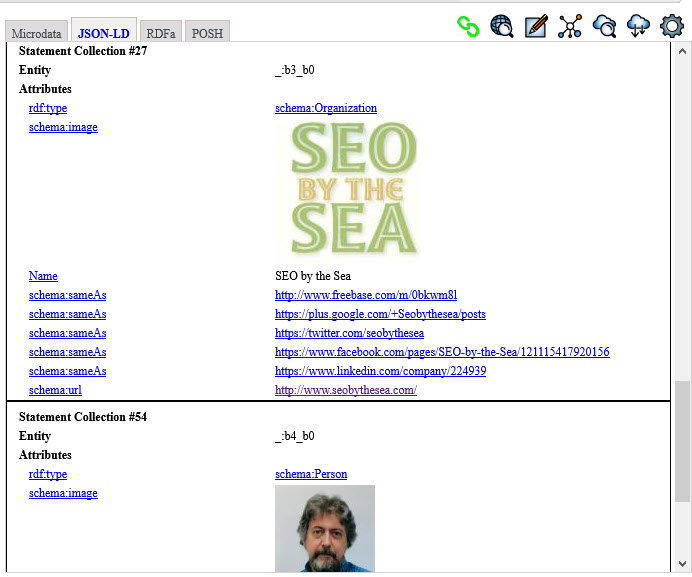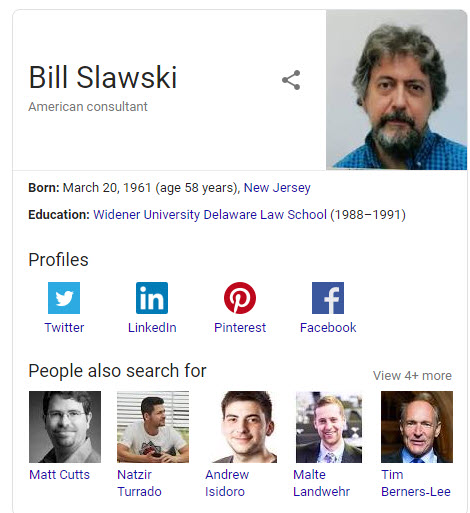Table of Contents
Microsoft Is Focusing On Entities, Too
It is interesting comparing Google and Bing. Microsoft was granted a patent about related entities last week. When I saw it, it reminded me of a similar patent from Google that I wrote about in 2014 in Entity Associations with Websites and Related Entities
We know Google has been working towards indexing facts and entities using its knowledge graph. I have written about Microsoft’s efforts towards creating a huge concept graph called Probase, in the post, Are You, Your Business, or Products in a Knowledge Base?
Related Content:
Somehow, efforts towards building Probase stopped at Microsoft. That project seems revived and it picked up some steam with a new name, and attribution pointing to the original Probase. This project is now the Microsoft Concept Graph, which you can learn more about at the Introduction to the Microsoft Concept Graph, including a demo.
You can search the <a=”https://concept.research.microsoft.com/Home/Demo”>Concept Graph Demo to see if Microsoft understands entities that might be on your page. I decided to see what the Microsoft Concept Graph knew about me:
I found myself liking that result.
Microsoft was granted a patent last week on related entities. In addition to defining what an entity is, it tells us about an entity store, and relationships between entities, and an entity graph:
One or more entities may be identified from an input search query. The one or more entities may include a person, a product, a company, a location, a combination thereof, or the like. Once one or more entities are identified from the search query, an entity store may be referenced to identify one or more related entities. The entity store includes a collection of known entities (e.g., entities that have been previously identified and stored in the entity store) and their relationships to other entities. The one or more related entities, along with their relationship(s) to the entity (and one another, perhaps) may then be displayed in the SERP to the user.
In additional embodiments, one or more related entities may be ranked to identify related entities having stronger relationships with the entity. Additionally, entity graphs may be created and stored in the entity store to depict the related entities and the relationship to the entity (i.e., the original entity associated with a search query).
The Related Entities patent from Microsoft is:
Identifying related entities
Inventors: Dmitry Zhiyanov, Deqing Chen and Yan Ke
Assignee: Microsoft Technology Licensing, LLC
US Patent: 10,248,732
Granted: April 2, 2019
Filed: October 26, 2015
Abstract
Methods, systems, and computer-storage media having computer-useable instructions embodied thereon for identifying related entities are provided. One or more entities may be identified from a search query. The one or more entities may include any identifiable term having related information associated therewith. An entity store may be referenced to identify one or more related entities related to the entity. The one or more related entities, along with their relationship(s) to the entity (and one another, perhaps) may then be ranked and displayed to a user.
Why the Emphasis on Entities?
Google has also filed a patent about Related Entities too. I wrote about that in Entity Associations with Websites and Related Entities
We see knowledge panels in both Google and Bing when a query contains an Entity. We know for certain that Google attempts to identify entities in queries because Google’s Paul Haahr told us that they do in a presentation at SMX West 2016 in “How Google Works: A Google Ranking Engineer’s Story”:
In this patent. Microsoft is telling us that not only will they attempt to identify entities that may be associated with a query, but afterward will look through an entity store to see what entities might be related to those associated entities as well:
One or more entities may be identified from an input search query. The one or more entities may include a person, a thing, a place, a product, a company, a location, a combination thereof, or the like. Entities may be anything in a search query that may be related to any other information.
Once the one or more entities are identified from the search query, an entity store may be referenced to identify one or more related entities.
Micoroft’s Entity Store
Microsoft’s entity store includes a collection of known entities, that were previously identified and stored in the entity store) and their relationships to other entities.
Related entities may be shown, along with how they are related may be shown in Search Results. We are also told that a distance may be shown for each related entity. A distance is the number of connections away an entity might be to a related entity in an entity graph.
How Related Entities are identified.
- The method includes identifying an entity within a search query
- Referencing an entity store to identify one or more related entities related to the entity
- The one or more related entities may be identified as related to the entity based on historical data of a plurality of user sessions, wherein the historical data includes a click of the one or more related entities associated with the entity within the search query
- The data may then be mined to identify at least one of the one or more related entities having a predetermined distance from the entity, wherein a predetermined distance from the entity is identified in an entity graph.
- The one or more related entities may be ranked based on the predetermined distance from the entity and the one or more related entities and a relationship of each of the one or more related entities to the entity may be stored in the entity graph.
- The at least one of the one or more related entities may be displayed according to the ranking of the one or more related entities.
Action Items Regarding Entities
1. Build Entity Associations on your Pages – Make sure that the clients you work with, and their brands show up as entities at both Google and Bing. They should be recognized as entities and have knowledge graphs showing up for them. This could be done if they are listed in a knowledge base such as Wikipedia, or IMDB, or Yahoo Finance. Another step towards making sure these entities are recognized by Google or Bing would be to verify them in Google My Business or Bing Places.
In addition to Microsoft’s Concept Graph, you can check to see if a client is in Bing Entity Search.
2. Search in Google Trends to See if clients or their brands are listed. There are categories associated with things that you look up to in trends. For many things, one of the category items is “Search Term”, but there may be at least one other that can be an entity type. For instance, the additional category for my name is “American Consultant.” If clients or their brands are not listed in trends, that maybe that they need to be understood as being an entity first.
3. Sniff Structured Data – Use the Open Link Structured Data Sniffer as a browser extension – it can tell you whether there is structured data on pages that you visit, It gives you a chance to view that data, too. (This can be very useful when looking at competitor’s pages, to see quickly what they are doing with structured data.)
4. Find Related Entities – If your client or one of their brands is in a knowledge base such as Wikipedia, look those up, and see if they mention other entities that may be related somehow. You may wish to include ones that are, within the context of a page that mentions your entities. A place name may also be an entity, and if one is included, you may want to view the knowledge base entry for it as well.
5. Disambiguate Entities using Sameas links – If there are multiple people with the same name as someone you mention on a site, and they are listed in disambiguation pages at a place such as Wikipedia, including a sameas link to the appropriate listing at Wikipedia for your individual from their knowledge base listing, shows that they are unique, and that will help Google Understand whom you are referring to. See: Google on Finding Entities: A Tale of Two Michael Jacksons
6. Connect Social profiles to businesses – If you Include sameas links to the social profiles for your business on a page for your site in JSON-LD, then Google will know that those are related to your business. A Google support Page provides more details: Enhance Your Site’s Attributes.
7. Optimize for Entities – Often pages of a site can be made much richer if you research those, and the entities that they mention, which may be related to them. You can see Google doing this in a knowledge panel when it tells you which other actors also appeared in movies with Tom Hanks, or Google shows a carousel when asked for “subsidiaries Alphabet.” Look up Paypal, and in a knowledge panel, you will see a clickable list of founders of the company.
Conclusion
Search appears to be increasingly about things and not strings (to use Google’s Knowledge graph catchphrase.) This is true at both Google and Microsoft. Understanding how entities are used on a page can help you optimize that page. I wrote about How I Came to Love Entities in the past on a project which showed how helpful it was to pay attention to entities while optimizing a page. Have fun making sure that your pages are filled with people, places, and things!
Search News Straight To Your Inbox
*Required
Join thousands of marketers to get the best search news in under 5 minutes. Get resources, tips and more with The Splash newsletter:


